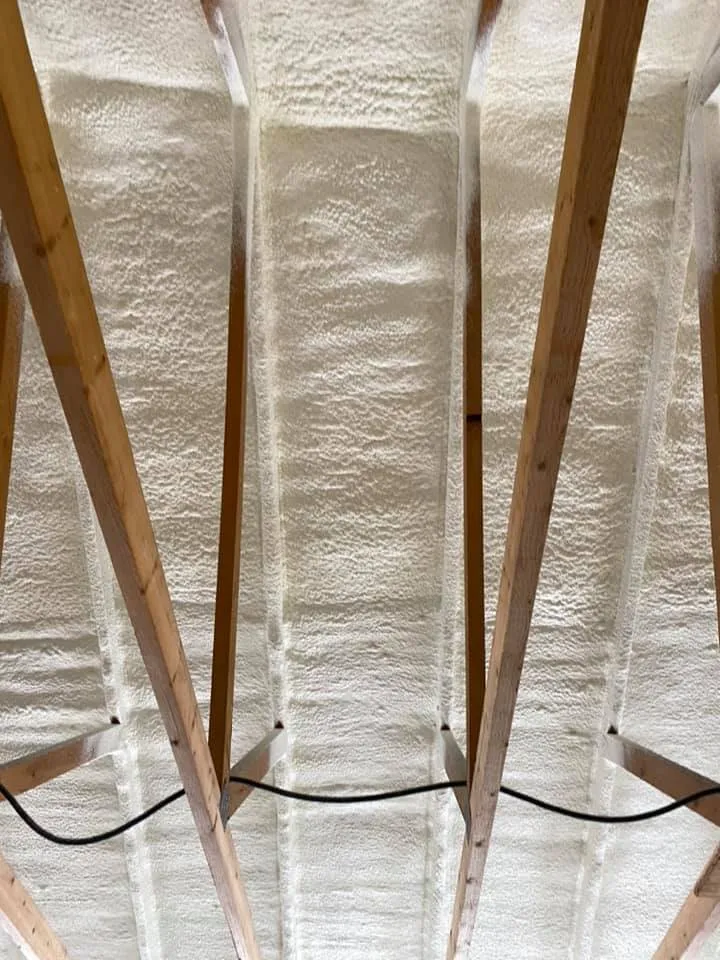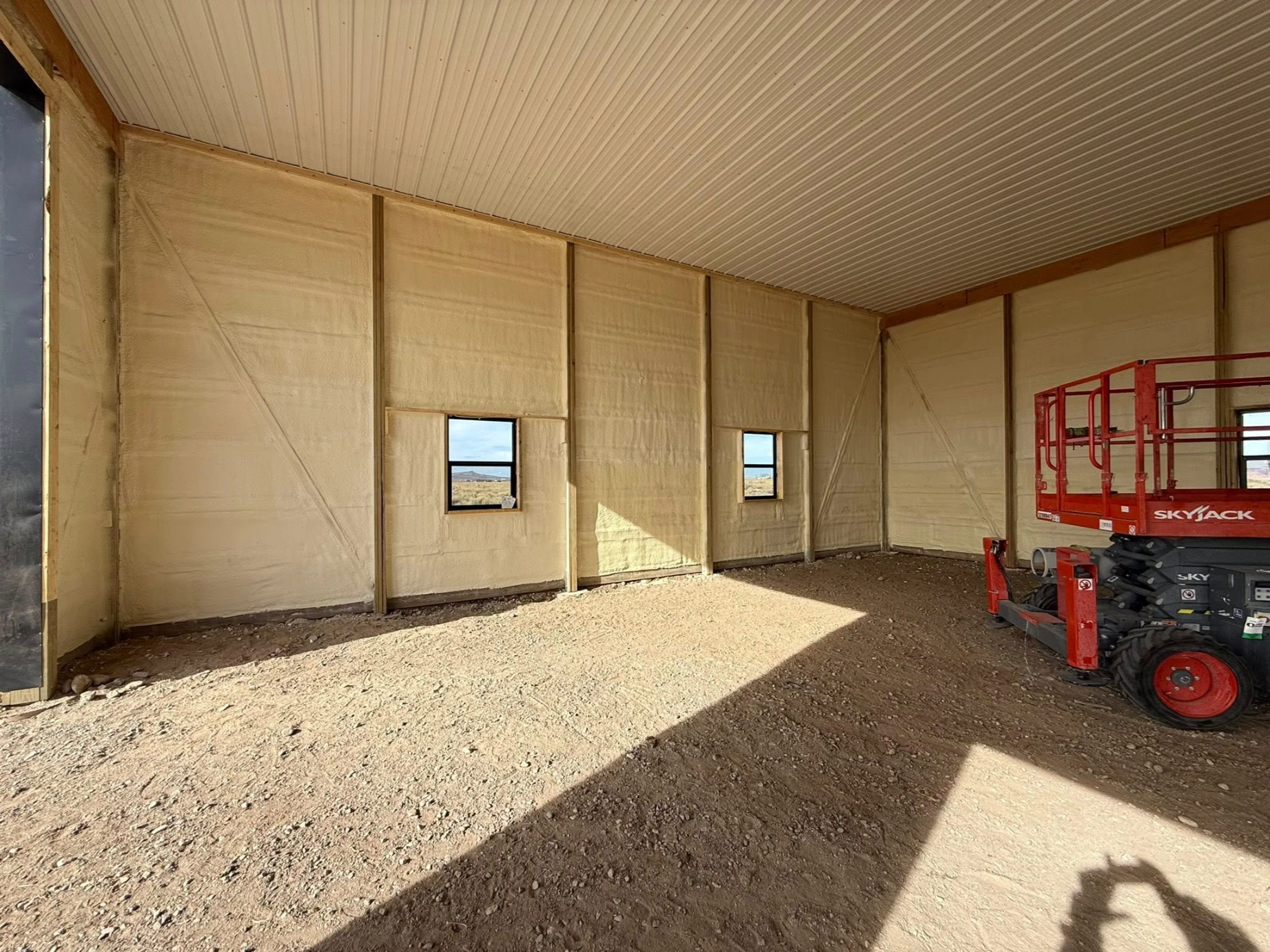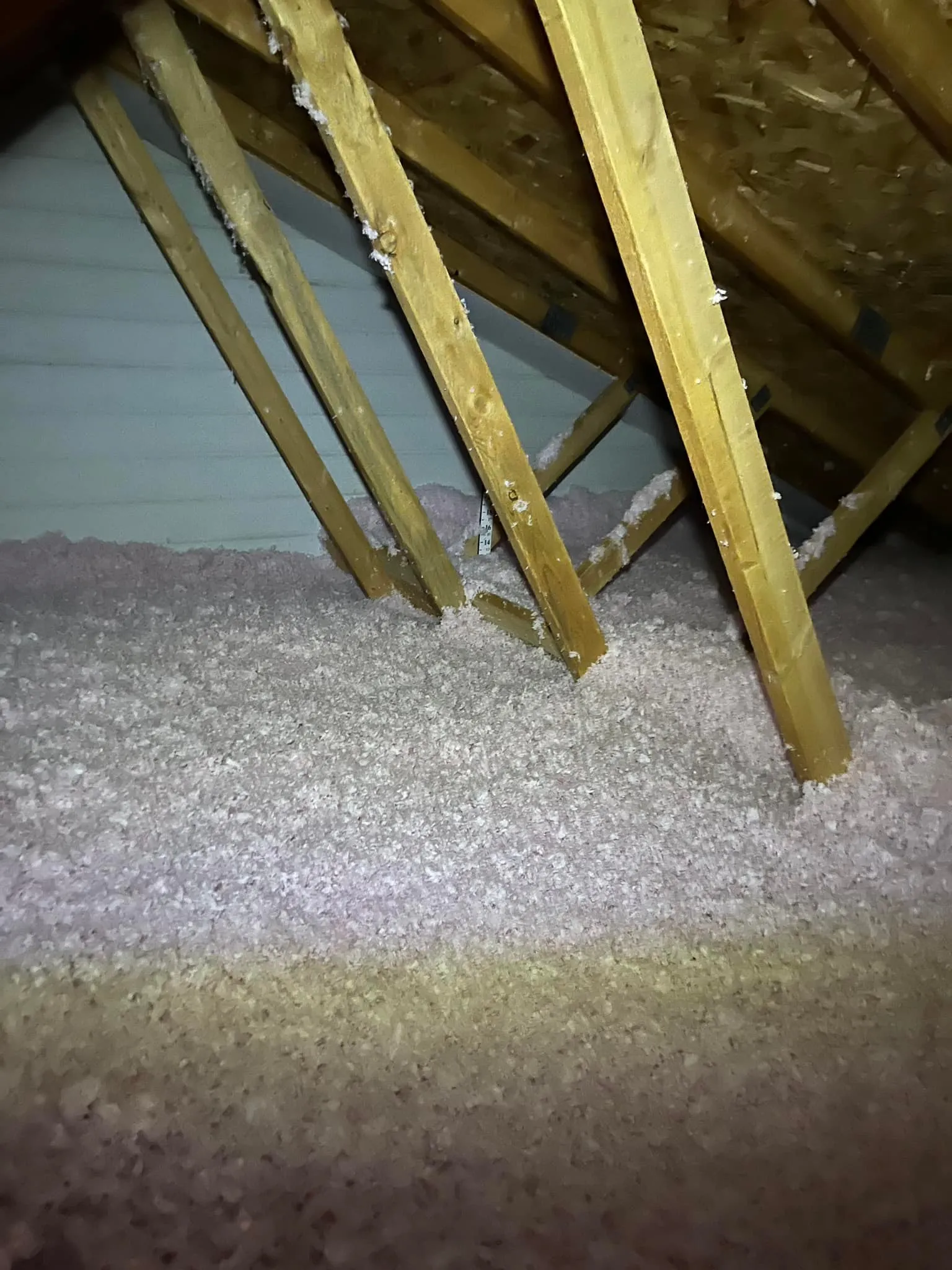

Spray foam insulation’s reliability in extreme weather stems from its ability to create a near-perfect air seal. Unlike traditional insulation materials that simply slow heat transfer, spray polyurethane foam (SPF) expands to fill every crack and gap, effectively stopping air leakage. For a place like Kemmerer, with its cold, windy winters and significant temperature shifts, this air barrier is the primary defense against energy loss, drafts, and moisture problems. The foam’s rigid structure and resistance to water also contribute to a building’s durability against heavy snow loads and freeze-thaw cycles.
This article breaks down the specific properties that make spray foam a resilient choice for the demanding Wyoming climate. The information is based on extensive field experience installing insulation solutions in homes and commercial buildings throughout the region. Understanding these technical details helps property owners make an informed decision about long-term building performance and energy efficiency.
The effectiveness of insulation is often discussed in terms of R-value, which measures its resistance to conductive heat flow. While important, R-value alone doesn’t tell the whole story. A significant amount of energy loss in buildings happens through convection, which is air movement through gaps in the building envelope. A report from the U.S. Department of Energy explains that air leakage can account for a large portion of a home’s heating and cooling costs.
Spray foam excels because it addresses both conduction and convection. As it’s applied, it expands up to 100 times its original size, conforming to the shape of the cavity and bonding directly to studs, sheathing, and other building materials. This process creates a continuous, monolithic barrier that is exceptionally effective at stopping drafts. In a climate where winter winds are common, preventing this uncontrolled air exchange is essential for maintaining a comfortable indoor temperature and reducing the strain on heating systems.
Certain types of spray foam offer more than just thermal resistance. Closed-cell spray foam, in particular, becomes very dense and rigid as it cures. This adds structural integrity to the building assembly. Research conducted by the National Association of Home Builders (NAHB) Research Center has shown that closed-cell foam can increase the racking strength of wall assemblies, making them more resistant to lateral loads from high winds.
Moisture management is another area where spray foam stands out, especially closed-cell varieties. Its composition makes it impermeable to water, so it acts as a vapor barrier. This prevents moisture-laden air from passing through the insulation and condensing on colder surfaces inside the wall, which is a common cause of mold and rot.
Bonus Tip: In basements and crawl spaces, applying closed-cell spray foam directly to the foundation walls can prevent ground moisture from entering the home, improving indoor air quality and protecting the structure.
The table below offers a straightforward comparison between spray foam and more traditional insulation types based on key performance metrics relevant to Kemmerer’s climate.
| Feature | Closed-Cell Spray Foam | Open-Cell Spray Foam | Fiberglass Batts | Blown-In Cellulose |
|---|---|---|---|---|
| Air Barrier | Excellent | Good | Poor (Allows air passage) | Fair (Settles over time) |
| Vapor Barrier | Yes (Built-in) | No (Permeable) | No (Requires separate barrier) | No (Requires separate barrier) |
| Typical R-Value/Inch | 6.0 – 7.0 | 3.5 – 4.5 | 3.1 – 4.3 | 3.2 – 3.8 |
| Structural Support | Yes | No | No | No |
| Moisture Resistance | Excellent | Poor (Can hold water) | Poor (Loses R-value when wet) | Poor (Can hold water) |
Choosing the right insulation involves more than just picking the material with the highest R-value. Here are a few practical factors to think about.
The two main types of spray foam have different applications.
Applying spray foam is a chemical process, not a simple DIY project. It requires precise temperature and pressure controls, along with proper ventilation and personal protective equipment. An experienced, certified installer ensures the foam is mixed correctly and applied at the right thickness to achieve its stated performance benefits.
Bonus Tip: Always ask an insulation contractor about their training and certification. Proper application is just as important as the product itself for long-term reliability.
When a home is properly air-sealed with spray foam, it becomes very airtight. This is great for energy efficiency but means the building can no longer “breathe” on its own. To maintain healthy indoor air quality, a mechanical ventilation system, such as a heat recovery ventilator (HRV) or energy recovery ventilator (ERV), may be necessary. These systems exchange stale indoor air with fresh outdoor air while minimizing heat loss.

The reliability of spray foam insulation in a demanding climate like Kemmerer’s comes from its multifaceted performance. It provides superior thermal resistance by stopping air leakage, adds structural durability against wind and snow, and manages moisture to protect the building’s integrity. While the initial investment may be higher than for other materials, data from ENERGY STAR shows that improving a home’s insulation and air sealing can lead to significant savings on annual energy bills. The long-term value comes from lower utility costs, improved comfort, and a more durable structure. The best choice ultimately depends on evaluating a property’s specific needs and long-term goals.
A thorough evaluation of your property is the best way to determine if spray foam is the right solution for your specific needs. For a detailed consultation, the team at High Country Solutions can provide expert guidance based on years of experience in the region. Contact the office by email at [email protected] or by phone at (307) 248-9063 to discuss your project.
High-quality closed-cell spray foams are known for their stable thermal resistance. Initially, some minimal change in R-value can occur as the blowing agent within the cells diffuses, but it stabilizes to provide consistent, long-term performance.
Spray foam insulation is required to meet the same fire safety standards as other building materials. It is typically installed with a thermal barrier, such as drywall, to meet building codes. Some foams are treated with fire retardants to reduce flammability.
Yes, very effectively. Ice dams are often caused by warm air from the living space leaking into the attic and melting snow on the roof. By creating a complete air seal on the attic floor or roof deck, spray foam prevents this air leakage, keeping the roof surface cold and stopping the melt-freeze cycle that forms ice dams.
Closed-cell foam is generally more expensive than open-cell foam due to its higher density and the greater amount of material used per square foot. However, its added benefits, like structural reinforcement and moisture-blocking capabilities, often justify the investment in specific applications.


